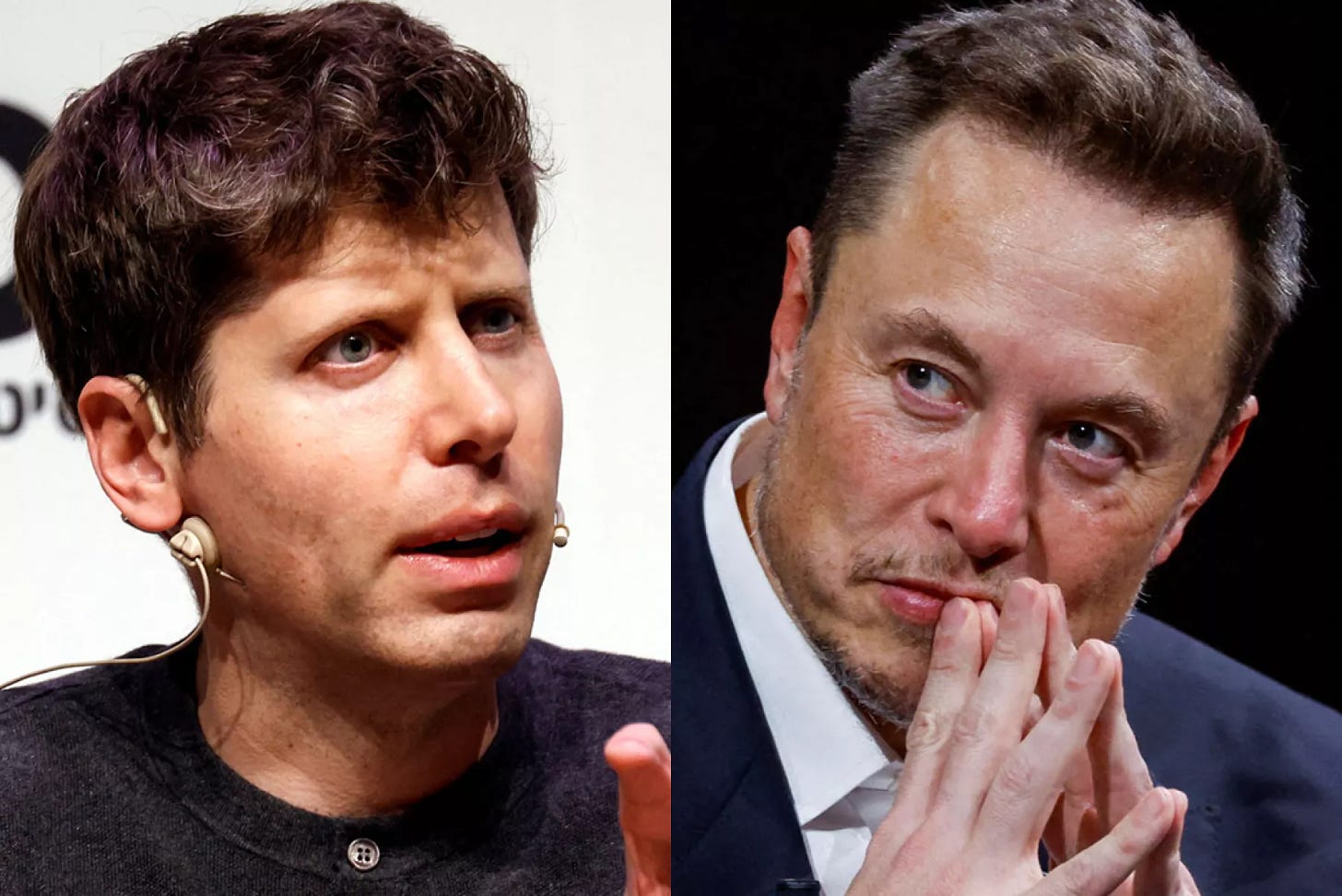
Elon Musk filed on Thursday a lawsuit against OpenAI and Sam Altman. For years, Musk has been critical of OpenAI’s gradual shift from a non-profit, open-source AI lab to a for-profit, closed-source AI startup, so the move wasn’t unexpected in substance. It was, perhaps, in timing, although we’ll understand very soon why he chose this moment and why it matters.
In this article, I’ll summarize in a few paragraphs the meat of the 46-page document (I recommend you read it in full, especially if you don’t know OpenAI’s history and are curious about the early conflicts and decisions). Then I will analyze Musk’s motivations (both stated and covert). Finally, I will explore what happens next in case Musk wins and in case he loses (I won’t comment on the legal validity of his claims).
Musk has been afraid of AGI’s threat toward humanity since, at least, 2012. He wanted, above all else, that Google and DeepMind—founded in 2010 and acquired by Google in 2014—didn’t win the race; Larry Page, then Google CEO, embraced AI as the natural continuation of our evolution whereas Musk was “pro-human”.
OpenAI was founded in 2015 as a non-profit, open-source AI lab in response to the Google-DeepMind threat. The Founding Agreement (signed also by Sam Altman and Greg Brockman, who Musk has called as defendants in the lawsuit) says the goal was to achieve AGI to benefit all of humanity and not shareholders and remain an open-source non-profit.
Up to 2023, OpenAI had been a fairly open AI lab with the help of Musk’s funding, especially with GPT (2018) and GPT-2 (2019). Also, but less so, with GPT-3 (2020). However, they never published a technical paper for GPT-4 (March 2023). This was the first significant breach of the “open-source” part of the agreement, probably motivated by ChatGPT’s unexpected public success.
Over the years, OpenAI also changed its structure. In 2019 they added a for-profit arm. In 2020, they granted Microsoft an exclusive license to integrate GPT-3 into its products as well as all pre-AGI technology OpenAI would create while the partnership lasted, in exchange for much-needed funding (at that point Musk had already withdrawn promised funding after he failed an attempt to become CEO). This made OpenAI a capped-profit company—with the for-profit arm subjected to the non-profit board’s governance—but financially tied to Microsoft.
Critically, the lawsuit alleges that GPT-4 “is an AGI algorithm” (this assertion seems to be primarily based on research by Microsoft, the infamous “Sparks of AGI” paper). If accepted as true, this would prohibit Microsoft, per the Founding Agreement, from using GPT-4 in its products (which it does).
It’s important to note that the OpenAI non-profit board—agreed in consensus as the only entity with the legal power to claim whether AGI has been achieved—never said GPT-4 was above the threshold of “pre-AGI technology” set for the exclusive license of use, which could be a weakness of this claim.
In November 2023, Sam Altman was fired by the non-profit board. After a few intense days, he was reinstated and the board’s members that had played a role in the coup were pressured to resign. The lawsuit states that Microsoft CEO Satya Nadella made clear the kind of power they exert over OpenAI (“We have the people, we have the compute, we have the data, we have everything”).
The lawsuit says Altman “hand-picked a new Board” and claims that, with these events, “OpenAI’s corporate structure that had been designed as a system of checks and balances between the nonprofit arm, for-profit arm, the Board, and the CEO to ensure the non-profit mission was being carried out, collapsed overnight.”
Because the board is the only entity that can say whether OpenAI has “attained AGI,” and is allegedly on Altman’s side now, they can delay the claim indefinitely.
The result is that OpenAI is effectively a for-profit closed-source AI company highly dependent on Microsoft and with a board that will no longer conflict with the financial incentives that go against the Founding Agreement. Both OpenAI and Microsoft stand to make a lot of money from their mutually beneficial partnership, as long as they don’t claim to have attained AGI.
The main goal for Musk with this lawsuit is to force OpenAI to adhere to the Funding Agreement and go back to its original status as a non-profit and open-source AI lab. The arguments that support the breaches of contract and fiduciary duty are 1) that OpenAI licensed GPT-4 (AGI-level AI) to Microsoft 2) that OpenAI kept GPT-4 closed and 3) that OpenAI gave Microsoft a seat on the new board.
A different but equally important argument is the problem with OpenAI’s business model: “A non-profit startup has collected tens of millions of dollars in contributions for the express purpose of developing AGI technology for public benefit, and shortly before achieving the very milestone that the company was created to achieve, the company has become a closed, for-profit partner of the world’s largest corporation, thereby personally enriching the Defendants.” If non-profits can do that, then what stops all tech startups from following OpenAI’s steps?
From here on I share my analysis and speculation (supported by arguments and evidence). I believe Musk’s motivations are of three kinds:
-
Safety: Please, don’t kill all of humanity
-
Business: OpenAI threatens the viability of xAI and Tesla
-
Personal: Altman’s betrayal; Musk’s failure



































































































































































































































































































































































































































































